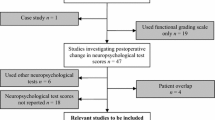Abstract
Shunt surgery is the usual treatment for infantile hydrocephalus; however, the extent to which it avoids subsequent neurological deficits is uncertain. The effect of early-onset hydrocephalus was tested in H-Tx rats using the Morris water maze. Spatial learning was assessed at 21 days after birth in control (n=18), hydrocephalic (n=18) and hydrocephalic rats shunt-treated at 4–5 (n=7) or at 10–12 days of life (n=13). The time taken to find a hidden platform was measured in five trials on 2 consecutive days and the data analyzed by one-and two-way ANOVA and t-tests. The latencies of the control rats decreased significantly between the first and second trial on the 1 st day, and learning was retained until the 2nd day. The hydrocephalic group had longer latencies than controls on both days, with no significant decrease between any trials. Performance was not significantly different between the two shunt groups. Overall, the shunted rats had latencies which were not significantly different from controls but were significantly lower than hydrocephalics. Despite this, the shunted rats did not perform as well as the controls. It is concluded that, although shunt treatment improved learning, some effects of early-onset hydrocephalus may not be reversible and/or a longer recovery time is required.
Similar content being viewed by others
References
Bekoff A, Trainer W (1979) The development of interlimb co-ordination during swimming in postnatal rats. J Exp Biol 83:1–11
Boillat CA, Harris NG, Kaiser GL, Jones HC (1993) Electron microscopy of the cerebral cortex in control, hydrocephalic and shunted H-Tx rats. Eur J Pediatr Surg 3 [Suppl 1]:30–31
Del Bigio MR, Bruni JE (1988) Periventricular pathology in hydrocephalic rabbits before and after shunting. Acta Neuropathol 77:186–195
Dennis M, Fitz CR, Netley CT, Sugar J, Harwood-Nash DCF, Hendrick B, Hoffman HJ, Humphreys RP (1981) The intelligence of hydrocephalic children. Arch Neurol 38:607–615
Hale PM, McAllister JP II, Katz SD, Wright LC, Lovely TJ, Miller DW, Wolfson BJ, Salotto AG, Shroff DV (1992) Improvement of cortical morphology in infantile hydrocephalic animals after ventriculoperitoneal shunt placement. Neurosurgery 31:1085–1096
Hanigan WC, Morgan A, Shaaban A, Bradle P (1991) Surgical treatment and long-term neurodevelopmental outcome for infants with idiopathic aqueductal stenosis. Child's Nerv Syst 7:386–390
Harris NG, Jones HC, Williams SCR (1992) MR imaging for measurements of ventricles and cerebral cortex in postnatal rats (H-Tx strain) with progressive inherited hydrocephalus. Exp Neurol 118:1–6
Harris NG, McAllister JP, Jones HC (1993) The effect of untreated and shunt-treated hydrocephalus on cortical pyramidal neurone morphology in the H-Tx rat. Eur J Pediatr Surg 3 [Suppl 1]:31–32
Harris NG, Jones HC, Patel S (1994) Ventricle shunting in young H-Tx rats with inherited congenital hydrocephalus: a quantitative histological study of cortical grey matter. Child's Nerv Syst 10:293–301
Hirsch J-F (1994) Concensus: long-term outcome in hydrocephalus. Child's Nerv Syst 10:64–69
Jones HC, Bucknall RM (1988) Inherited prenatal hydrocephalus in the H-Tx rat: a morphological study. Neuropathol Appl Neurobiol 14:263–274
Jones HC, Bucknall RM, Harris NG (1991) The cerebral cortex in congenital hydrocephalus in the H-Tx rat: a quantitative light microscopy study. Acta Neuropathol 82:217–224
Jones HC, Briggs RW, Harris NG (1993) Inherited hydrocephalus in H-Tx rat pups: treatment monitored with magnetic resonance imaging. Eur J Pediatr Surg 3 [Suppl 1]:29–30
Jones HC, Boillat CA, Harris NG, Kaiser GL (1994) Electron microscopy of the cerebral cortex in young hydrocephalic and shunt-treated H-Tx rats. Soc Neurosci Abs 20:1237
Kriebel RM, Shah AB, McAllister JP II (1993) The microstructure of cortical neuropil before and after decompression in experimental infantile hydrocephalus. Exp Neurol 119:89–98
McAllister JP II, Cohen MI, O'Mara KA, Johnson MH (1991) Progression of experimental infantile hydrocephalus and effects of ventriculoperitoneal shunts: an analysis correlating magnetic resonance imaging with gross morphology. Neurosurgery 29:329–340
Miyaoka M, Ito M, Wada M, Sato K, Ishii S (1988) Measurements of local cerebral glucose utilisation before and after V-P shunt in congenital hydrocephalus in rats. Metab Brain Dis 3:125–132
Miyazawa T, Sato K (1991) Learning disability and impairment of synaptogenesis in HTX rats with arrested shunt-dependent hydrocephalus. Child's Nerv Syst 7:121–128
Morris R (1984) Developments of a water-maze procedure for studying spatial learning in the rat. J Neurosci Methods 11:47–60
Oi S, Matsumoto S, Katayama K, Mochizuki M, Nakamura H (1990) Pathophysiology and postnatal outcome of fetal hydrocephalus. Child's Nerv Syst 6:338–345
Prigatano GP, Zeiner HK, Pollay M, Kaplan RJ (1983) Neuropsychological functioning in children with shunted uncomplicated hydrocephalus. Child's Brain 10:112–120
Rudy JW, Stadler-Morris S, Albert P (1987) Ontogeny of spatial navigation behaviours in the rat: dissociation of “proximal”-and “distal”-cue-based behaviors. Behav Neurosci 101:62–73
Schenk F (1985) Development of place navigation in rats from weaning to puberty. Behav Neural Biol 43:69–85
Suda K, Sato K, Takeda N, Miyazawa T, Arai H (1994) Early ventriculoperitoneal shunt effects on learning ability and synaptogenesis of the brain in congenitally hydrocephalic HTX rats. Child's Nerv Syst 10:19–23
Tonkiss J, Shultz P, Galler JR (1992) Long-Evans and Sprague-Dawley rats differ in their spatial navigation performance during ontogeny and at maturity. Dev Psychobiol 25:567–579
Wada M (1988) Congenital hydrocephalus in HTX-rats: incidence, pathophysiology and developmental impairment. Neurol Med Chir (Tokyo) 28:955–964
Yoshida Y, Koya G, Tamayama K, Kumanishi T, Abe S (1990) Histopathology of cystic cavities in the cerebral white matter of HTX rats with inherited hydrocephalus. Neurol Med Chir (Tokyo) 30:229–233
Young HF, Nulsen FE, Weiss MH, Thomas P (1973) The relationship of intelligence and cerebral mantle in treated infantile hydrocephalus. Pediatrics 52:38–44
Zeiner HK, Prigatano GP, Pollay M, Biscoe CB, Smith RV (1985) Ocular motility, visual acuity and dysfunction of neuropsychological impairment in children with shunted uncomplicated hydrocephalus. Child's Nerv Syst 1:115–122
Author information
Authors and Affiliations
Rights and permissions
About this article
Cite this article
Jones, H.C., Rivera, K.M. & Harris, N.G. Learning deficits in congenitally hydrocephalic rats and prevention by early shunt treatment. Child's Nerv Syst 11, 655–660 (1995). https://doi.org/10.1007/BF00300725
Received:
Issue Date:
DOI: https://doi.org/10.1007/BF00300725




